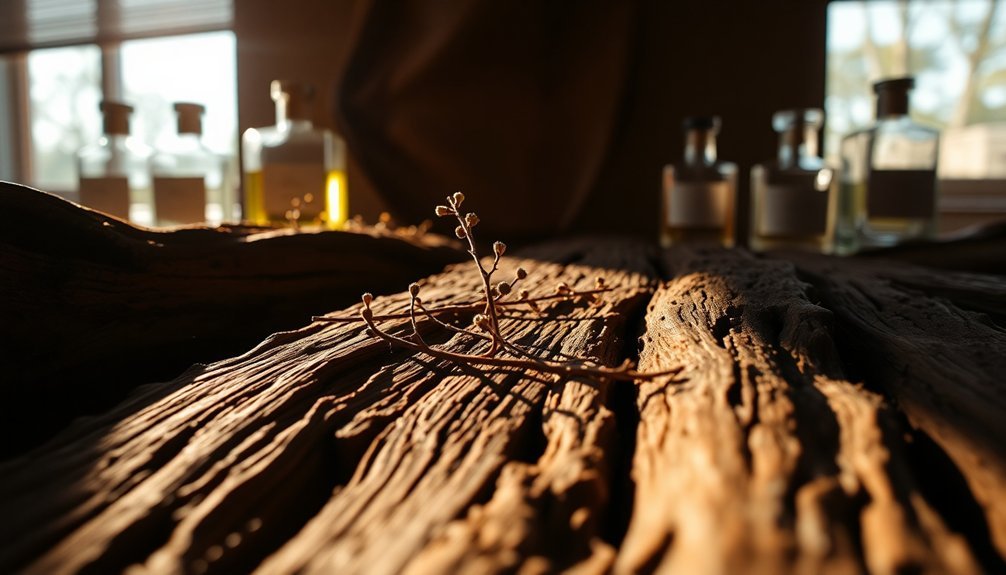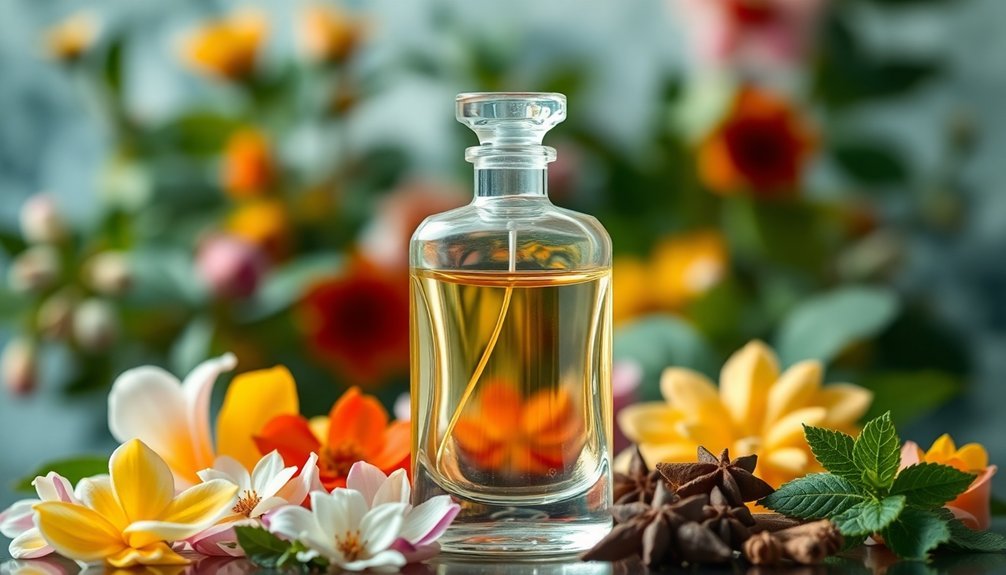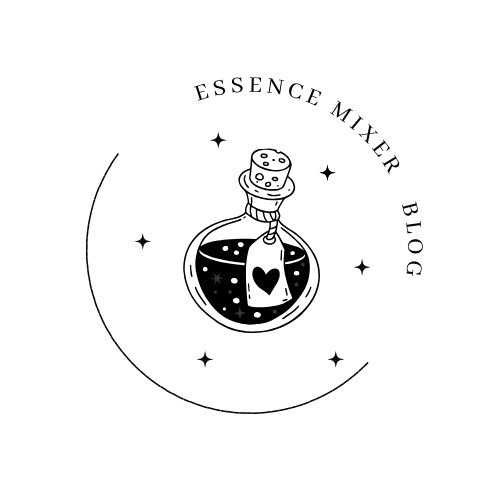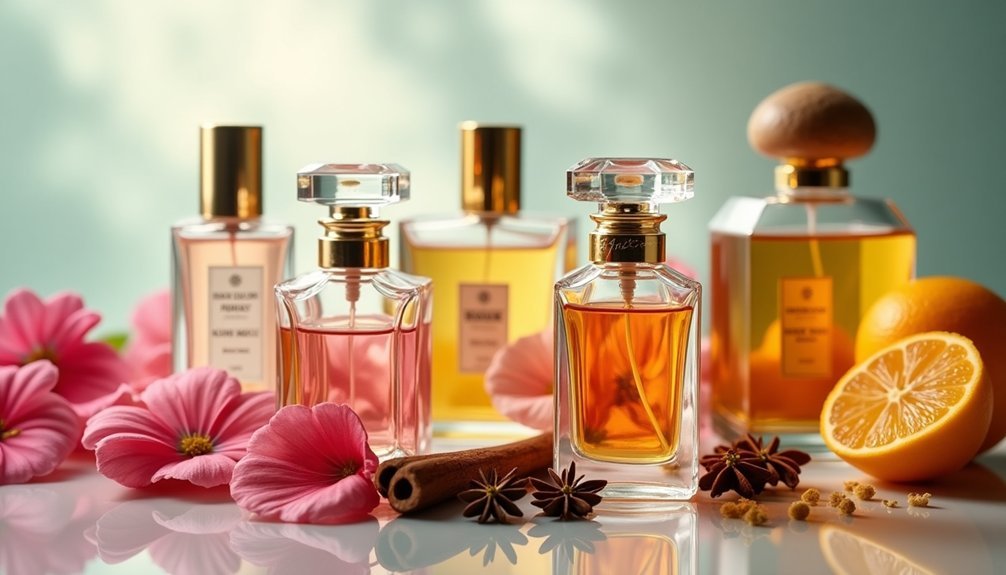Perfumes follow 10 scent family groups to help you navigate and understand fragrances more easily. This modern classification system, popularized by Michael Edwards in 1992, organizes scents into clear categories like floral, woody, fresh, and oriental. You'll find related fragrances grouped together on the fragrance wheel, making it simpler to identify similar scents you might enjoy. By exploring these distinct families, you'll reveal the secrets to finding your perfect signature scent.
The Evolution of Fragrance Classification Systems

While perfume has captivated humans for millennia, the systematic classification of fragrances didn't emerge until the mid-20th century. You can trace this organization back to Paul Jellinek's Odor Effects Diagram in 1951, which first mapped out the relationships between different scents and their psychological impact.
The most significant advancement came in 1992 when Michael Edwards revolutionized fragrance classification by introducing the Fragrance Wheel. This system organizes scents into four main categories: floral, oriental, woody, and fresh.
As perfumery has evolved to match consumer preferences, new fragrance families have emerged, including gourmand, fougère, and chypre. Each family showcases distinct olfactory characteristics that help you navigate the complex world of perfumes and find scents that match your taste preferences.
Understanding the Modern Fragrance Wheel
Since its introduction by Michael Edwards in 1992, the modern fragrance wheel has become an essential tool for understanding and categorizing perfumes.
You'll find 10 distinct scent families, including floral, woody, fresh, and citrus, arranged in a circular pattern that shows how different aromatic notes relate to each other.
The wheel's practical design helps you navigate the perfume market by:
- Identifying the relationships between different scent families
- Understanding how subfamilies branch from main categories
- Discovering complementary fragrances that share similar characteristics
- Finding new scents based on your existing preferences
This systematic approach has revolutionized how you explore and select perfumes, making it easier to expand your fragrance collection while staying within scent profiles that appeal to your preferences.
Essential Building Blocks of Scent Families

To effectively navigate the world of fragrances, you'll need to understand the fundamental building blocks of scent families. The fragrance wheel organizes perfumes into four main categories: floral, amber (oriental), woody, and fresh fragrances.
Each of these scent families contains unique subcategories that help you identify specific notes and characteristics. When you're exploring the floral family, you'll discover subfamilies like fruity florals and soft florals.
The woody fragrance family includes aromatic variations, while amber (oriental) features rich, warm notes. Fresh fragrances often incorporate citrus and aquatic elements.
These essential building blocks serve as your guide to fragrance selection, helping you identify patterns in scents you enjoy and discover new perfumes that match your preferences. Understanding these relationships makes your fragrance journey more intuitive and rewarding.
Floral Notes: The Heart of Perfumery
You'll find floral notes at the core of modern perfumery, with classic elements like rose, jasmine, and orange blossom serving as foundational building blocks in countless fragrances.
These traditional flowers blend seamlessly with contemporary additions like peach and fruity accords to create dynamic, multifaceted scents.
When you explore iconic perfumes like Chanel No. 5, you'll notice how masterfully perfumers combine these timeless floral elements with modern interpretations to craft fragrances that resonate across generations.
Classic Floral Building Blocks
The foundational role of floral notes in perfumery can't be overstated, as they represent the largest and most beloved fragrance family in the industry.
You'll find iconic perfumes like Chanel No. 5 embracing these elements as their signature scent, creating timeless compositions that evoke romance and nostalgia.
Classic floral building blocks typically include:
- Rose – the queen of flowers, offering a rich, romantic depth
- Jasmine – providing an intense, exotic sweetness
- Orange blossom – contributing fresh, clean undertones
- Various subfamilies – including fruity floral, soft floral, and floral oriental
These essential elements work together to create diverse compositions that capture both freshness and sophistication.
Whether you're drawn to a single floral note or complex blends, these building blocks form the cornerstone of modern perfumery.
Mixing Modern Floral Notes
While traditional perfumery relied on single floral notes, modern fragrance creation embraces complex layering techniques that combine multiple flower essences.
You'll find today's perfumes expertly blending soft floral scents with complementary notes to create unique signature scents that stand out in the fragrance family.
Modern floral fragrances aren't just about roses and jasmine anymore. They're pushing boundaries by incorporating unexpected combinations that deliver a diverse range of experiences.
You can discover iconic perfumes that mix traditional flowers with contemporary elements, creating sophisticated blends that shift seamlessly from top to middle notes.
This evolution has transformed the floral category, making it more versatile and appealing to different preferences.
Whether you're drawn to light, fresh compositions or complex floral orientals, there's a modern interpretation that'll capture your imagination.
Woody Foundations in Classic and Contemporary Scents

Deep within the heart of classic and contemporary perfumery lies the woody fragrance family, distinguished by its warm, opulent character and remarkable staying power.
You'll find this versatile foundation anchored by luxurious ingredients like sandalwood, while subfamilies of mossy woods and dry woods offer distinct earthy and green notes.
Here's why woody notes have become a cornerstone in perfumery:
- They provide exceptional longevity and stability
- They blend seamlessly with both floral and fresh accords
- They're equally appealing in men's and women's perfumes
- They create depth and sophistication in any composition
From classic woody fragrances like Chanel's Egoiste to contemporary scents like Diesel's Bad, you'll discover how modern perfumers are reimagining these timeless ingredients, crafting innovative blends that honor tradition while embracing fresh interpretations.
Fresh and Aromatic Elements in Perfume Creation
When you're exploring fresh fragrances, you'll discover two distinctive elements that define this category: bright citrus notes like bergamot and lemon, paired with invigorating herbal accents.
Ocean-inspired accords add a unique dimension to fresh scents, capturing the essence of sea breeze and water elements that create an airy, clean sensation.
These fresh elements work together to produce uplifting scents that can transport you from bustling city life to a Mediterranean coastline or sun-drenched garden.
Citrus and Herbal Notes
The dynamic interplay between citrus and herbal notes forms the cornerstone of new, aromatic perfumes.
You'll find bright, zesty aromas from bergamot and grapefruit working harmoniously with herbal elements like sage, mint, and thyme. This balanced composition creates revitalizing scents that transport you into nature's embrace.
When you explore the new fragrance family and aromatic subfamily, you'll discover why these combinations are so effective:
- Citrus notes provide an energetic, uplifting character
- Herbal elements add depth and complexity to the composition
- The combination creates invigorating scents perfect for warm weather
- Natural elements evoke outdoor experiences and liveliness
This powerful blend of citrus and herbal components delivers a sophisticated yet approachable fragrance that's both vibrant and grounding.
Ocean-Inspired Fresh Accords
Inspired by the power of ocean breezes, new accords in modern perfumery capture the essence of coastal environments through a sophisticated blend of aquatic notes and aromatic elements.
When you experience ocean-inspired fragrances, you'll notice how they combine marine notes with bright citrus and green notes to create an energizing fragrance profile.
These scents often feature bergamot and sage, working harmoniously with synthetic molecules that replicate the pure scent of water.
You'll find that aromatic components, including herbs and spices, add complexity to these aquatic compositions, while floral elements contribute to their dynamic character.
These new accords transport you to seaside locations, evoking memories of salt-kissed air and crisp ocean spray.
It's this careful balance of natural and synthetic ingredients that makes ocean-inspired perfumes both revitalizing and sophisticated.
The Role of Amber and Oriental Notes

Rich and evocative, amber and oriental notes form the backbone of some of perfumery's most luxurious fragrances.
You'll find these warm, sensual scents characterized by their exotic blend of spices, herbs, and powdery resins. The combination creates an aromatic journey that's both sophisticated and alluring.
Here's what makes amber and oriental fragrances so distinctive:
- They feature sweet notes of vanilla balanced with rich myrrh
- Their warm, spicy profile creates an intimate, seductive atmosphere
- The complex layering of resins adds depth and staying power
- You'll discover diverse interpretations in fragrances like Magie Noire
Whether you're drawn to soft amber or woody oriental subfamilies, these scents offer an intoxicating blend that's perfect for those seeking a more intense and sophisticated fragrance experience.
Connecting Scent Memories With Fragrance Families
Your most cherished memories can resurface through specific fragrance families, as your brain naturally links scents to past experiences.
When you encounter floral notes, you might recall a springtime wedding, while woody scents could transport you back to childhood adventures in nature.
This emotional connection between fragrance families and personal memories helps you select perfumes that resonate with your life experiences and evoke meaningful feelings.
Scent-Triggered Emotional Recall
The profound connection between scent and memory stems from the unique relationship between our olfactory bulb and limbic system, making fragrance one of the most powerful triggers for emotional recall.
When you experience familiar fragrances, they can instantly transport you to specific moments, places, or emotions from your past.
Understanding fragrance families and their olfactory characteristics helps you identify scents that resonate with your personal memories:
- Floral scents often evoke memories of spring gardens or romantic encounters
- Woody fragrances can remind you of comforting moments in nature
- Familiar scents can trigger vivid memories of loved ones
- Different fragrance families connect uniquely to your emotional experiences
This emotional connection between scents and memories plays an essential role in perfume selection, helping you choose fragrances that truly reflect your personal identity and experiences.
Memory Mapping Through Fragrances
Building on our understanding of scent-triggered memories, memory mapping through fragrances offers a practical way to categorize and connect your personal experiences with specific scent families.
When you explore different scent categories, like floral and woody notes, you'll notice how your olfactory system naturally links these fragrances to meaningful moments in your life.
This connection isn't random – it's based on your emotional processing of past experiences. You might find that certain perfumes trigger nostalgia for specific events, like how citrus reminds you of summer adventures or vanilla recalls childhood baking sessions.
Blending Techniques Across Scent Categories

Mastering fragrance blending requires a deep understanding of how different scent families interact and complement each other.
When you're working with the fragrance wheel, you'll discover that adjacent scent families often create harmonious combinations, while opposite fragrance techniques can yield surprisingly delightful results.
Here's how you can create balanced aromas using different blending techniques:
- Pair floral notes with fresh fragrances to achieve a light, uplifting composition.
- Use the triangle technique to select three complementary subfamilies for complex depth.
- Combine woody fragrances with adjacent aromatic notes for warmth and balance.
- Experiment with opposing scent families to create unique, contrasting compositions.
Selecting Your Signature Scent Through Family Groups
Finding your signature scent becomes considerably more manageable when you understand fragrance family groups. By exploring the main categories – floral, oriental, woody, and fresh – you'll discover scent profiles that align with your personal preferences.
The fragrance wheel serves as your visual guide, showing how different families connect and complement each other.
Start by identifying common notes that resonate with you, such as rose in floral fragrances or vanilla in oriental blends. Pay attention to scents that trigger positive memories or emotions, as these often make the most meaningful signature scents.
You'll find that each fragrance family offers diverse subcategories, giving you plenty of options to explore. As you sample different fragrances within your preferred families, you'll naturally gravitate toward the perfect scent that represents your unique personality.
Frequently Asked Questions
What Are the Scent Families of Perfume?
You'll find perfumes divided into ten distinct families: floral, oriental, woody, fresh, citrus, green, fruity, aqueous, fougère, and gourmand. Each family offers unique scent characteristics that create different sensory experiences.
Which Fragrance Family Is Best?
You'll find the "best" fragrance family is entirely personal. It depends on your unique preferences, lifestyle, and memories. Whether you love floral, woody, fresh, or oriental scents, the best choice is what resonates with you.
What Are These 4 Standard Families of Fragrances?
You'll find four main fragrance families in perfumery: floral (featuring fresh flower scents), amber (warm and exotic), woody (rich and opulent), and fresh (invigorating citrus and aromatics). Each has unique characteristics.
What Is the Genealogy of Perfumes?
You'll find perfume's genealogy stretches from ancient civilizations' religious and medicinal uses to today's complex industry. It's evolved through cultural influences, leading to formalized scent classifications and modern fragrance development practices.
In Summary
You'll find that the 10 scent family groups serve as your reliable roadmap in the vast world of fragrances. They're not just arbitrary categories but carefully organized collections that help you understand, appreciate, and choose perfumes that match your preferences. Whether you're drawn to florals, woods, or oriental blends, these families make it easier to discover your perfect signature scent and expand your fragrance journey.





Leave a Reply